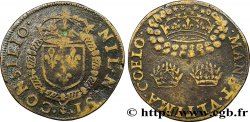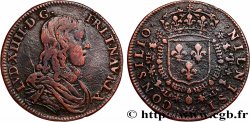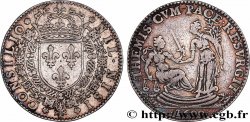E-auction 609-586974 - fjt_540036 - CONSEIL DU ROI Mariage du Roi 1661
Чтобы принять участие в торгах, вы должны войти в систему и стать подтвержденным участником аукциона. Войдите, чтобы сделать ставку. Ваш аккаунт будет подтвержден в течение 48 часов. Не ждите до закрытия торгов, чтобы зарегистрироваться.Сделав ставку на данный товар, вы вступаете в юридическое соглашение на покупку выбранного товара и нажатием кнопки «Сделать ставку» подтверждаете принятие вами условий интернет-аукционов cgb.fr.
Ставка может бить сделана только в полном эквиваленте евро. Торги закроются согласно времени, указанному в описании товара, все ставки, сделанные после закрытия торгов, учитываться не будут. Не следует откладывать предложение вашей ставки до последнего момента, так как система может не успеть обработать вашу заявку, и ваша ставка не будет принята. Более детальную информацию вы найдёте здесь: FAQ по интернет-аукционам.
БЕСПЛАТНО.
БЕСПЛАТНО.
| Оценить : | 75 € |
| Цена : | 32 € |
| Максимальная предлагаемая цена : | 35 € |
| Конец торгов : | 16 December 2024 20:23:20 |
| Участников : | 5 Участников |
Тип Mariage du Roi
Дата: 1661
Металл: red copper
Диаметр: 27 mm
Ориентация осей монеты: 6 h.
Вес: 6,94 g.
Век: lisse
Ссылки в каталоге: :
Происхождение:
Cet exemplaire provient de la Collection Terisse
Лицевая сторона
Аверс: легенда: NIL. NISI. CONSILIO.
Аверс: описание: Écu de France couronné dans le double collier, avec 4 "L" dans le second.
Аверс: перевод: Rien sans le Conseil.
Обратная сторона
Реверс: легенда: PACI. AETERNAE. PACTISQVE. HYMENEIS ; À L'EXERGUE: 1661.
Реверс: Описание: Arc de triomphe surmonté d'un trophée.
Реверс: перевод: Pour une paix éternelle et pour un hymen qui en soit le gage (Virgile Enéide IV, 099) .
Комментарий
Contremarque énigmatique !.








 Cообщить об ошибке
Cообщить об ошибке Распечатать страницу
Распечатать страницу Отправить мой выбор
Отправить мой выбор Задать вопрос
Задать вопрос Consign / sell
Consign / sell
 Информация
Информация










